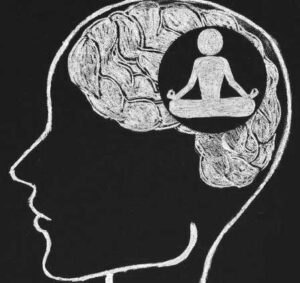I attended my first meditation class in the early 1990s. At the time, I had a high-stakes, high stress job that had me fully absorbed by day and haunted me by night. I kept thinking about work after hours and had a hard time shutting down my brain at bedtime. A friend suggested that I try a meditation class. From what little I knew, I assumed that it would help me clear my mind and get much-needed rest. So, even though it was a hassle to get to the center and one more thing on my busy schedule, I figured it would be worth it.
Walking into the center, I was encouraged by how peaceful it seemed, reinforcing my expectations for a mind-clearing class. I had on my corporate clothes and noticed that pretty much everyone else was dressed casually which planted a seed of: “You’re different. I don’t think you belong here.” It bothered me. I sat in the back and listened attentively to the dharma talk. I liked it. It was interesting.
 As we began the meditation, my mind started darting around all over the place. I could hardly get through a single breath without my attention being drawn away to a random thought. With the teacher’s encouragement, I kept returning to the breath, but I could not hold it there. Far from clearing my mind, it felt as though it was getting busier. At the end of 20 minutes, the hoped-for blank slate looked like a Jackson Pollack painting.
As we began the meditation, my mind started darting around all over the place. I could hardly get through a single breath without my attention being drawn away to a random thought. With the teacher’s encouragement, I kept returning to the breath, but I could not hold it there. Far from clearing my mind, it felt as though it was getting busier. At the end of 20 minutes, the hoped-for blank slate looked like a Jackson Pollack painting.
I was confused and mad at myself. How could I be so laser-focused at work in a chaotic environment and yet unable to sustain attention on the simple act of breathing in a calm one? It didn’t help when the feedback period was populated by those who had thoughtful commentary about the dharma talk and a Buddha-like experience of their meditation. I gave myself a failing grade and left discouraged.
I stayed with the for several more weeks but continued to have frustrating experiences with meditation. In the end, I decided that I was bad at meditation and would never get better at it. It was something that other people mastered, not people like me. It took me 20 years before I gave it another go.
I now know that many people share my inaugural meditation experiences, and that there are sound physiological reasons why. When our minds are not occupied with something specific, they tend to engage in introspective activities such as contemplating the past or future, running simulations of prospective activities, and daydreaming. This activity is mediated by a system of connected brain areas known as the Default Mode Network (DMN). It does not go silent when we go silent; it starts thinking!
Experienced meditators have quieter DMNs than inexperienced ones, but they still regularly experience these spontaneously generated introspective thoughts. That being said, even new meditators – with a modicum of training and a real-time bio feedback – can decrease their DMN activity so long as they just let their thoughts be rather than try too hard to shut them up.
With that in mind, I try to be an observer of my thoughts rather than identify myself as the thinker of them during meditation. I treat my thoughts like the ticker tape of the New York Stock Exchange. I watch them stream pass as though I’m just curious and interested, not an engaged investor with money on the line. From that vantage point, here are a few things that I’ve noticed:
- Sometimes, it’s an active trading day and lots of stuff breezes by. Other days, it’s slow. Either way, I just allow it to be what it is.
- I don’t feel a sense of ownership over everything in that stream of consciousness. Sometimes I find myself thinking: “Hmmm. I wonder where that thought came from!”
- Whatever shows up on the ticker tape doesn’t last long when I hold the entire stream lightly. Thoughts only seem to stick when I let them. Otherwise, they just pass by.
Whether engaged in formal or informal mindfulness practice, I remind myself that my thoughts may not be true. A thought is just a thought. It often helps when I add the prefix “I’m having the thought that…” I notice it without getting attached to it or needing to react to it.
We each think thousands of thoughts per day, a high percentage of which are the same thoughts we had the prior day. I bring an interested and compassionate attention to the Top 10 Hits on my internal radio network. It gives me a road map as to where I might make changes in my life to relieve anxiety or simply tune the dial elsewhere. The great thing about the brain – we can quite literally change our minds!